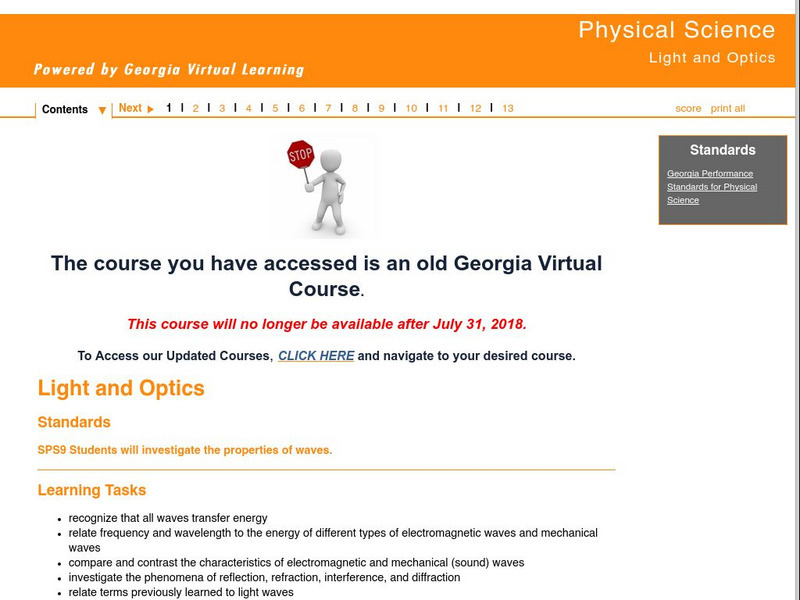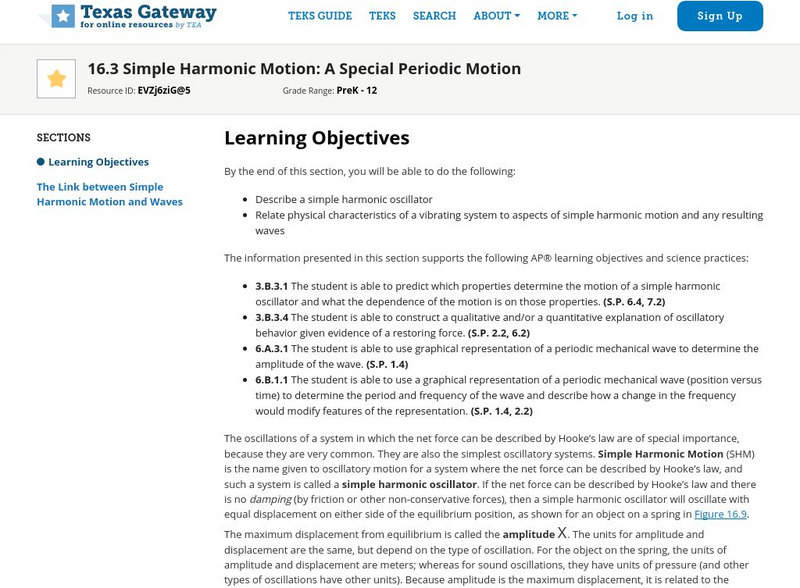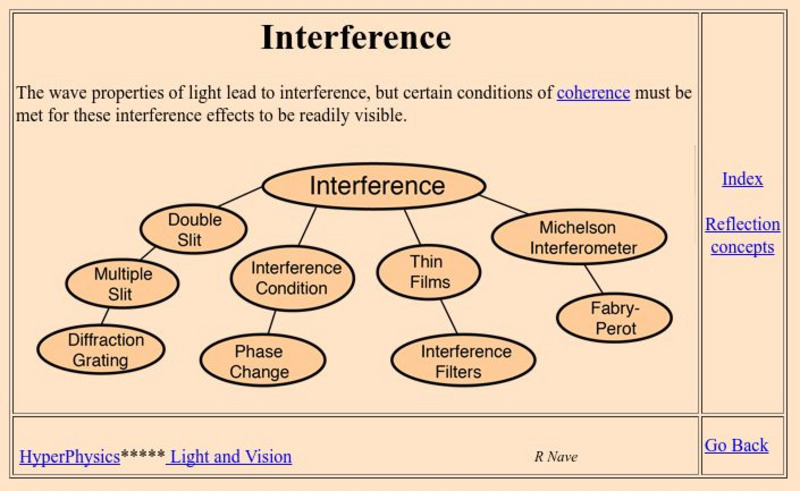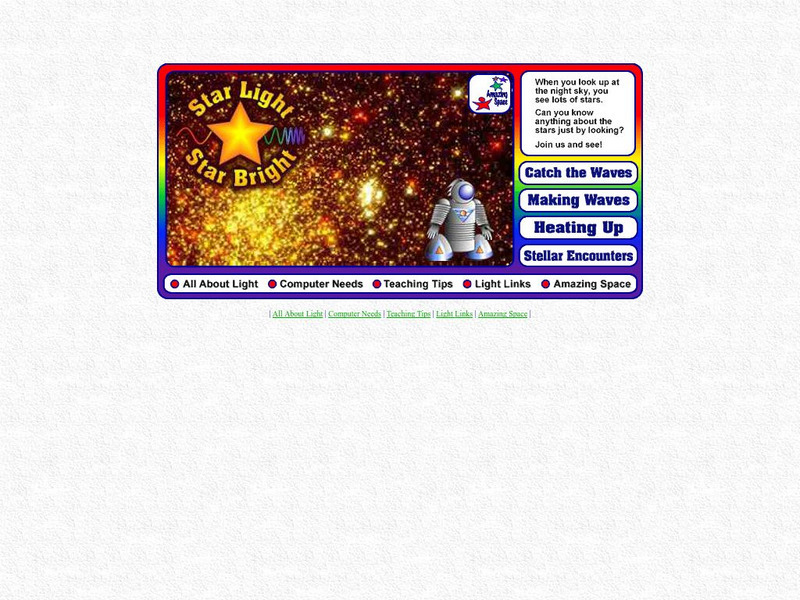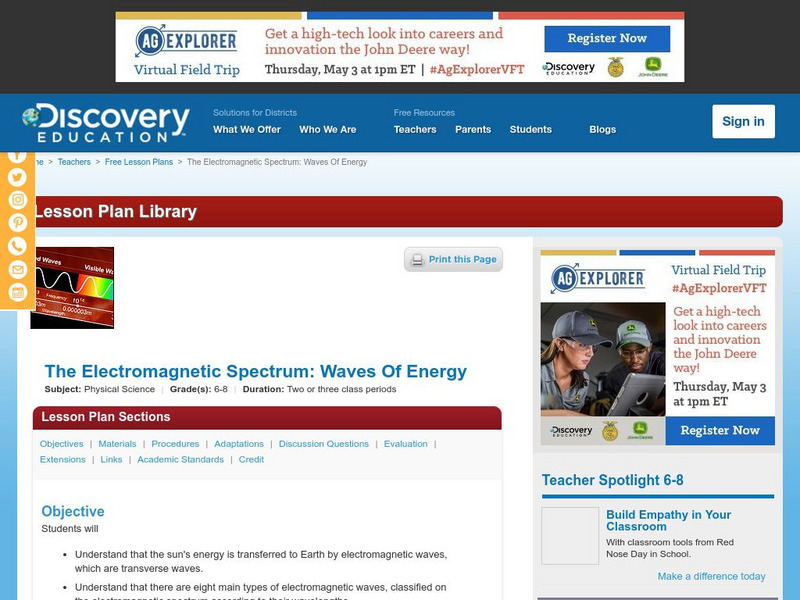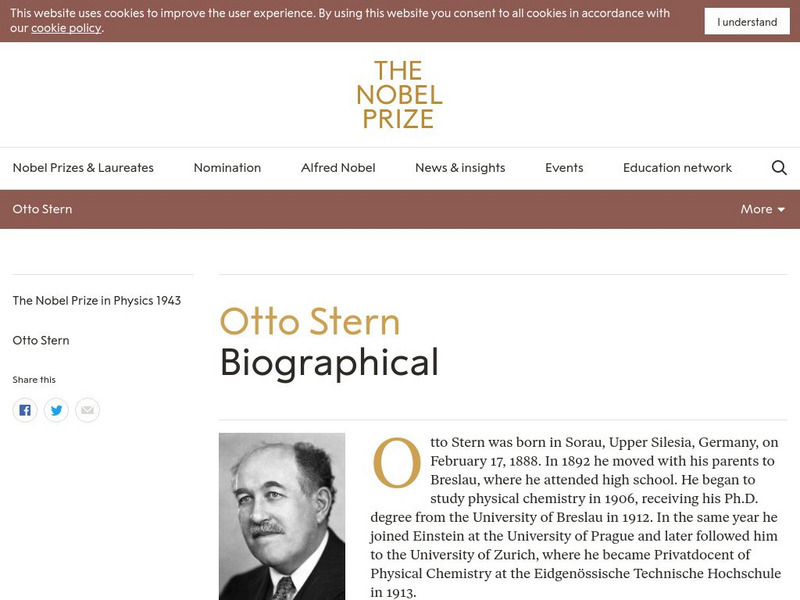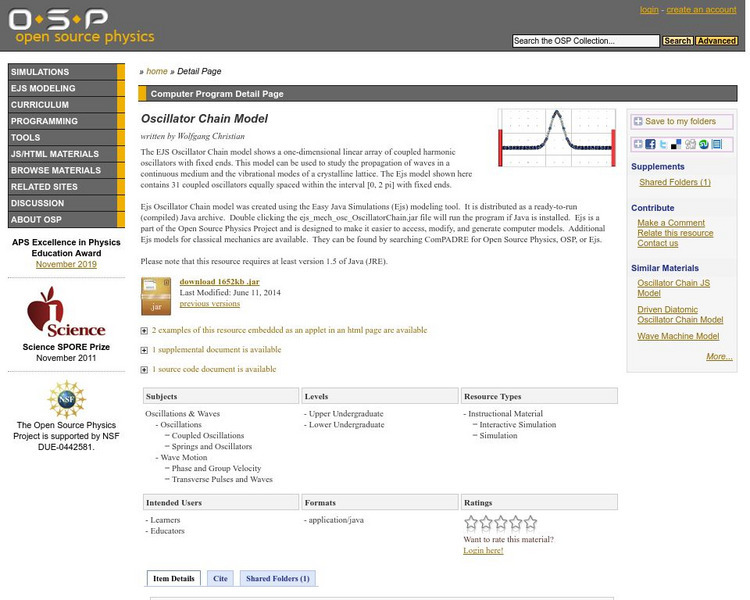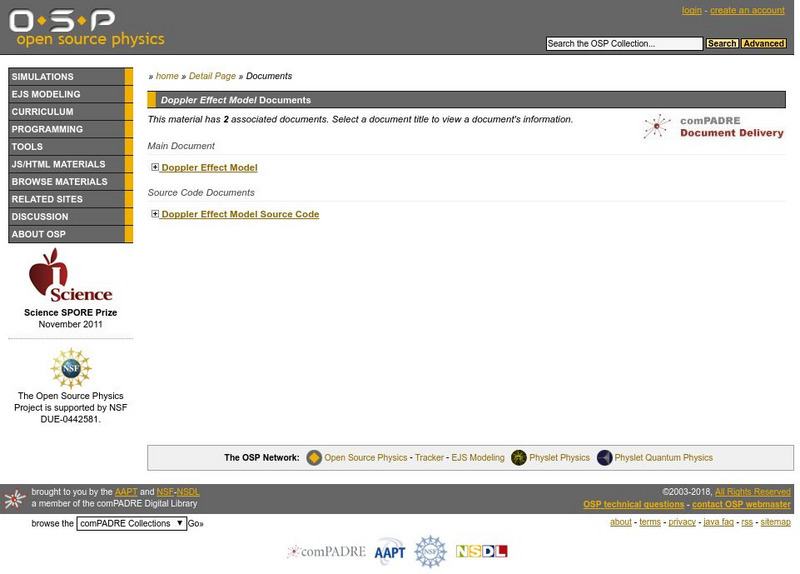Hi, what do you want to do?
McREL International
Mc Rel: Whelmer #10 Learning Activity: Singing Rod
An easy to do activity that investigates the simple observable properties of sound waves. The activity is presented in lesson plan format that meets NSES standards.
Georgia Department of Education
Ga Virtual Learning: Physical Science: Light and Optics
Students will investigate the properties of light waves. They will learn about the different types of electromagnetic waves and mechanical waves, and investigate the phenomena of reflection, refraction, interference, and diffraction.
Texas Education Agency
Texas Gateway: Simple Harmonic Motion: A Special Periodic Motion
By the end of this section, you will be able to describe a simple harmonic oscillator and relate physical characteristics of a vibrating system to aspects of simple harmonic motion and any resulting waves.
Georgia State University
Georgia State University: Hyper Physics: Interference
An indexing page for a physics department site about the wave properties of light that lead to interference.
American Geosciences Institute
American Geosciences Institute: Oceans
Seven hands-on lessons module in which students explore oceans. Inquiry-based investigations include properties of seawater, ocean water and currents, and features of the ocean floor.
Physics Central
Physics Central: Physics at Your Desk: Drumming Fingers
An easy experiment through which students explore sound waves while tapping their fingers on a desk or table in a quiet room.
Middle School Science
Middle School Science: Tuning Fork Lab
In this succinct lesson plan, students will compare the sounds produced by tuning forks and observe the behavior of sound waves in different media.
Scholastic
Scholastic: Study Jams! Science: Energy, Light and Sound: Sound
A video and a short quiz on how sound travels in waves, its properties, and how to measure it.
American Association of Physics Teachers
Com Padre Digital Library: Open Source Physics: Quartic Oscillator Model
A model showing the movement of a bead on a horizontal rod, with symmetric springs on each side. A phase-space chart is shown alongside the model.
Space Telescope Science Institute
Amazing Space: Star Light Star Bright
A few short, interactive activities on light waves can be found on this site. Numerous others links and teacher resources are posted here as well. A good background on light is offered for teachers.
Discovery Education
Discovery Education: The Em Spectrum: Waves of Energy
Students are introduced to the electromagnetic spectrum through this group research activity. Each group investigates a different wavelength range within the em spectrum and reports back to class. Discussion ideas also included.
Physics Classroom
The Physics Classroom: Sound Properties and Their Perception
The concept of pitch and frequency is covered in this tutorial. Learn what frequency and pitch are, the difference between infra sound and ultrasonic frequencies, and how pitch is related to the frequency of a sound.
Learning Wave Communications
Learning Wave: Distributive Property
The distributive property is demonstrated in a detailed example. A sample problem is provided for students to check for understanding.
Open Curriculum
Open Curriculum: Light as a Particle
Students learn about the properties of light as a photon and the wave-particle duality.
E-learning for Kids
E Learning for Kids: Science: Winery: Why Can We See Through Some Objects but Not Others?
Learn about the properties of materials in their interactions with light, including whether they are opaque, transparent, or translucent, and which of these produce shadows.
Nobel Media AB
The Nobel Prize: Otto Stern Biographical
This is a brief biography on the life and scientific work of Otto Stern, a physicist honored with the Nobel Prize in physics for his "development of the molecular ray method and his discovery of the magnetic moment of the proton."
Museum of Science
The Atoms Family
Let this classic family of monsters guide you as you learn about energy. Interactive exercises, experiments, and demonstrations help to build knowledge and raise questions.
Museum of Science
The Atom's Family: Radiometer
Help Dracula find out about light waves by using a virtual radiometer.
American Association of Physics Teachers
Com Padre Digital Library: Open Source Physics: Oscillator Chain Model
In this simulation a series of coupled oscillators in a chain with anchored ends can be investigated for their wave properties.
American Association of Physics Teachers
Com Padre Digital Library: Open Source Physics: Spinning Hoop Model
A model of a bead traveling along a spinning hoop. The hoop's velocity and the bead's initial angle can be modified, and the results are displayed on an accompanying chart.
American Association of Physics Teachers
Com Padre Digital Library: Open Source Physics: Doppler Effect Model
A simulation of the Doppler Effect, where a change in wave frequency can be observed from the reference frame of the wave source, an observer, or the medium.
NASA
Nasa: Beginner's Guide to Aerodynamics
Includes exhaustive information and a wealth of activities pertaining to aerodynamics and the physics of flight.
TeachEngineering
Teach Engineering: Sound
Students learn the connections between the science of sound waves and engineering design for sound environments. Through three lessons, students come to better understand sound waves, including how they change with distance, travel...






